Research & Development Center
Research & Development Unit
YANMAR Technical Review
Construction of New Service System Infrastructure by SMARTASSIST
Abstract
This article explains the development history of the remote information system of Yanmar ICT/M2M, and newly developed SMARTASSIST. The radio communication terminal provides excellent environmental resistance feature and the information network employs a high versatile network system in consideration of services in global area and had acquired certification for radio terminals from more than 50 countries. It works with the service tools that are linked to the internal system. And finally, an explanation is given about the future direction.
1. Introduction
The history of the remote information systems of Yanmar started 28 years ago in 1987 with the operation of the Remote Energy Support System (RESS), which targeted diesel and gas power generators. Yanmar then developed applications for energy systems such as gas heat pump air conditioners and micro cogeneration, a refrigeration(cool) container system for railroad transportation, and a power generation systems installed in large ships. This led to the development of the SMARTASSIST system described in this article, which targets moving machines such as agricultural machinery, construction machinery and marine boats. This article describes the technical development aspects and main functions of the SMARTASSIST system.
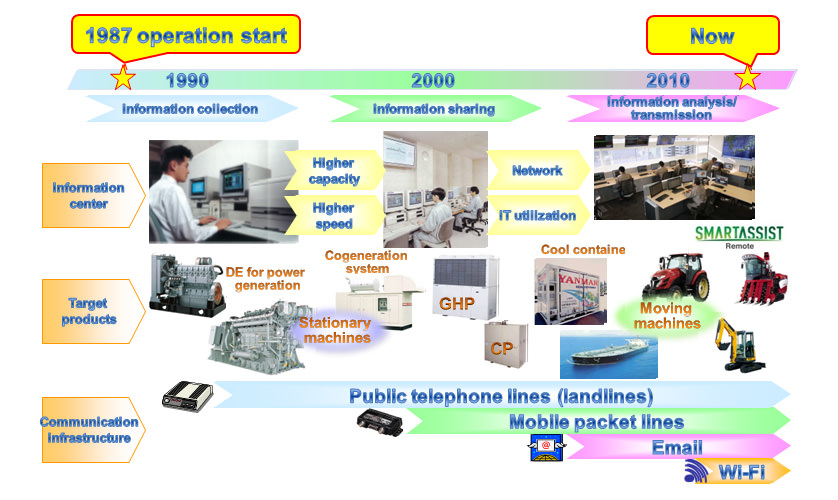
2. Overview of SMARTASSIST System
Broadly speaking, the SMARTASSIST system is comprised of two systems: SMARTASSIST-Remote, which always keeps watch over customers, and SMARTASSIST-Direct, which provides services to customers on-site. This article provides an overview of both systems.
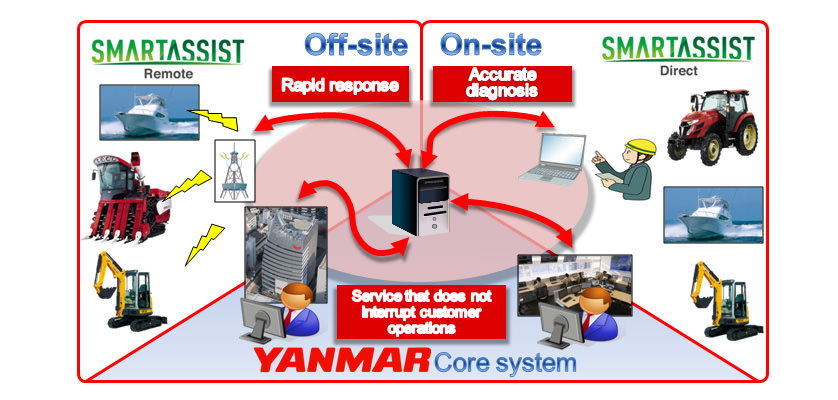
2.1. SMARTASSIST-Remote
SMARTASSIST-Remote provides a system based on the Yanmar remote support center for rapidly sharing information between customers and service staffs about the operating status of the customers' operating machines, the occurrence of abnormalities, and other data.
(1) Information collection network
This system was developed from the beginning with the objective of providing support for both domestic and overseas customers, and the construction of global networks shown in Fig. 3 is being promoted.
This network is configured to comply with the various regulations and network environments of the regions or countries of use, and it was designed to allow for flexible expansion into new areas in the future.
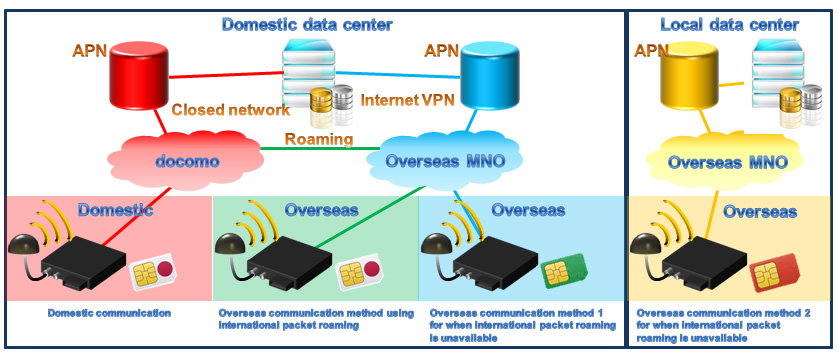
(2) Communication terminal
To collect information from the operating machines of customers using the information collection network described in (1), a communication terminal is required that constantly monitors the information of the operating machine, and when necessary, connects to the information collection network and transfers the data to the Yanmar remote support center.
This terminal is equipped as standard with a controller area network (CAN) communication function for collecting information from the controller of the operating machine, a global navigation satellite system (GNSS) function for acquiring the location information of the operating machine, and a wireless communication function that uses the cellular phone network. The environmental resistance performance satisfies the specification requirements of all business units of Yanmar considering the expansion into various business areas.
The certification required by different countries for wireless devices has been acquired for more than 50 countries, including those in North America, Europe, and Asia.
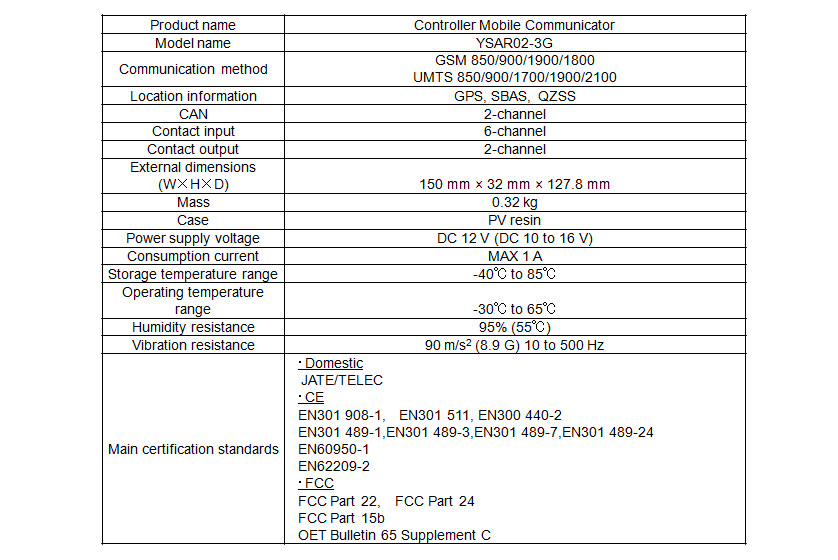
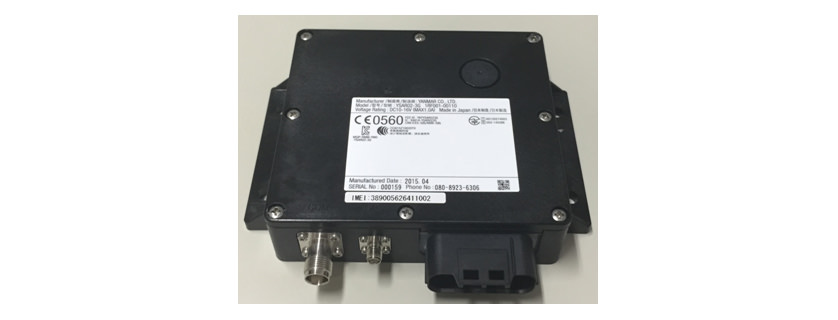
2.2. SMARTASSIST-Direct
SMARTASSIST-Direct provides a system for Yanmar service staff to perform periodic maintenance of operating machines and diagnosis when abnormalities occur.
(1) Communication with operating machines
To enable service staff to perform maintenance and fault diagnosis of operating machines, various types of information must be collected from the controllers of the operating machines. This tool uses the interface box shown in Fig. 5. It supports SAE J2534 for communication between the service tool and the interface box, and ISO14229, ISO14230, and SAE J1929 for communication between the interface box and the controllers, which are the standard protocol for service tools.
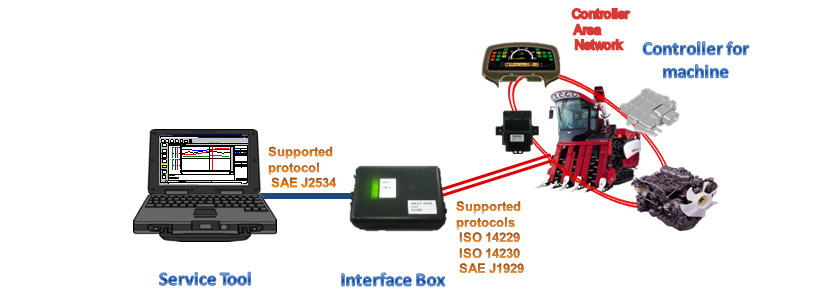
(2) Communication with internal system
Information required for on-site maintenance or fault diagnosis, such as service manuals, software, and model information, can be obtained from the internal system using this tool. The system has also been designed to enable service staff to connect to the network of the regional facility to automatically upload information about work at the site to the internal system.
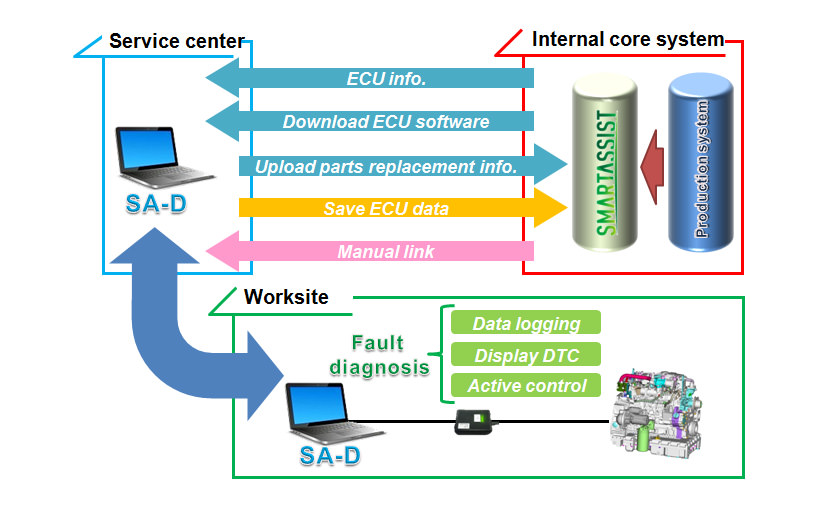
3. Overview of Main Functions
3.1. SMARTASSIST-Remote —Always Keeping Watch Over Customers—
The core functions of SMARTASSIST-Remote are described below.
(1) Event notification
If an error occurs in an operating machine, the controller sends notification of the error via CAN. This is detected by the communication terminal, which collates the data before and after the error occurred, and sends an alarm to the data center. The service staff responsible for the operating machine can use this data to identify the time, location, and type of error that occurred, as well as the conditions at the time. This enables rapid after-sales service that reduces the amount of machine downtime.
(2) Theft prevention based on designated work times and area monitoring
If work times and areas are set in advance, the system can detect machine operation outside the scheduled time or area and send a notification to the machine owner via email to warn of the risk of theft. Yanmar has received several reports of this function preventing the theft of agricultural machines.
(3) Operating trend notification
To perform appropriate maintenance, it is important not only to detect abnormalities like those described above, but also to understand the daily operating conditions of the operating machines. The system has a function that collects information from start to stop of the machine operation, summarizes this as trend data in one-minute intervals and sends data to the data center.
3.2. SMARTASSIST-Direct —Providing Services to Customers On-site—
The core functions of SMARTASSIST-Direct are described below.
(1) Maintenance inspections
After performing various maintenance services, whether the operation of each function is normal is judged based on the delivery inspection standards of the production plant for each model. This prevents operating machine downtime due to unnoticed maintenance mistakes or unnoticed function abnormalities. This helps provide a service that does not interrupt customers operations.
(2) Fault diagnosis
When a malfunction occurs in an operating machine, appropriate maintenance is performed by identifying the doubtful part of the problem from information such as the current operating status, previous error occurrence and records of operating conditions, and the maintenance history. Communication based on this data helps build a deep relationship with the customer.
(3) Software reprogramming
When software updating or software installation due to the malfunction of hardware such as the controller for the operating machine is necessary, this system supports rapid on-site reprogramming work. As described in section 2.2, the contents of this work are linked automatically to the internal system and managed as history information for each operating machine of the customer.
4. Conclusions
The remote information systems of Yanmar started with large-sized power generators. When these systems were adopted in more compact stationary machines such as gas heat pumps (GHPs) and micro cogeneration, their usefulness was recognized, and combined with advances in information and communication technology (ICT), these systems have grown to the status where they can be deployed in all products of the Yanmar group. As these systems have been deployed in all products, certain issues have come to light. In the future Yanmar aims to develop systems offering advanced services to customers by pursuing further technological innovation and making effective use of ICT. We will increase value by providing functions and services developed from the perspective of customers, to provide them with optimal solutions.
-IMPORTANT-
The original technical report is written in Japanese.
This document was translated by R&D Management Division.
Author


Research & Development Center
Research & Development Unit


